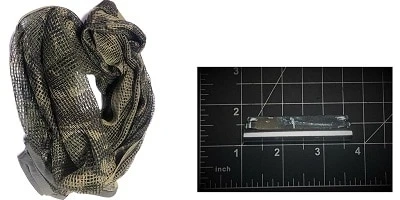Even the simplest of primitive muzzleloading arms are complex machines with moving parts, springs, and pins. Today, autoloading arms are immeasurably more complex.
These machines are subject to significant stresses, even in the course of routine firing and cycling. Just like as you would need to repair parts on a car periodically, the same logic can be applied to firearms use and ownership. Over time, firearm parts wear, fail, and must be serviced or replaced, even with routine care. This is what you need to know, and what you can do about it.
What Are the Main Parts of (Most) Firearms?
First up, an important fact: Not all firearms contain the same firearm parts. The components that a given platform contains are subject to several conditions, such as the action type, the model of the firearm, and the cartridge around which the platform is built.
With that said, most firearms, regardless of action type or caliber, contain the following parts:
● Trigger
● Barrel
● Receiver or frame
● Stock or grips
All firearms contain some form of action, which is the mechanism that is responsible for feeding, firing, and extracting cartridges, although the mechanism of cycling can vary. Some platforms are single shot, others, called repeaters, must be cycled manually, and some firearms are autoloading, capable of either semi or fully automatic modes of fire, or both. Others, like muzzleloaders or revolvers, have even more complex actions. The “action” is not included as a discrete entry in this list of firearm parts because firearm actions are complex mechanisms with many smaller parts. That is, the action is never a single part.
Because the action contains many of the moving parts on a firearm, it is the “part” that is most likely to fail first. More specifically, the action contains the parts that are the most likely to fail - so what are they?
Which Firearms Parts Fail First?
The following is a list of components inside of a firearm’s action that is likely to fail and be replaced, even with routine care, after years of use.
● Bolt carrier groups
● Gas rings
● Firing pins
● Extractors
● Ejectors
Regardless of action type, the following firearm parts will also need service and replacement over time:
● Trigger groups
● Barrels (particularly rifled barrels)
● Stocks made of natural materials
All firearm barrels wear over time, but the lands of rifled bears are most susceptible. Each projective that passes the barrel will wear away some of the rifling, diminishing accuracy ever so slightly. For many rifles and handguns, the effects will be noticeable after several thousand rounds, somewhere between 5 and 10 thousand.
Trigger groups, like firearm actions, contain many small springs and moving parts that will fatigue and fail over time and will need to be replaced.
Stocks made of wood, even though they don’t contain any moving parts, will be subject to warping, mold, and other conditions associated with humidity, as well as dry rot.
Where Can I Get High-Quality Firearms Parts?
Finding the right firearms parts can be difficult, especially without a great deal of historical knowledge or gunsmithing experience. This fact can be compounded by the fact that some arms manufacturers use very similarly sized parts on many platforms that are actually not cross-compatible (although in many cases, they are). Since it is crucial to use a platform-compatible part in any repair or replacement, access to the proper firearms parts is essential.
Whether you’re looking for a new barrel for a modern handgun or something as obscure as barrel bands for a Sharps Rifle, visit SARCO, Inc., at SarcoInc.com. They carry a huge collection of firearms parts and shooting accessories and their experts will help you find precisely what you need in no time - and they even carry parts kits in addition to gun parts. Visit their website or give them a call today at 610-250-3960.
For more information about Non Firing Replica Guns and M1 Garand Clips Please Visit : Sarco, Inc.



